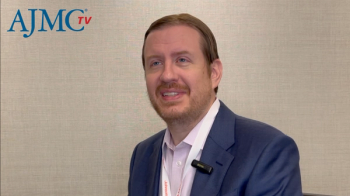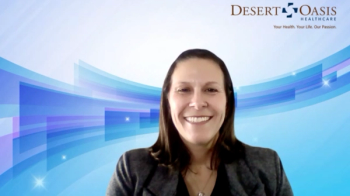
Air Pollution, Lung Health, and the Role of the Pulmonologist
Amid the impacts of climate change, industrial emissions, and environmental disasters, pulmonologists and other clinicians will need to deliver actionable advice on how to reduce the risks to lung health posed by air pollution, according to panelists at the CHEST Annual Meeting 2023.
As evidence accumulates on the health ramifications of air pollutants emitted by everything from transportation to agriculture to wildfires, pulmonologists have the power to arm their patients with protective strategies, according to panelists speaking at the session “Air Pollution and Health: From Tailpipes and Smokestacks to Our Patients and Communities” at the
Air pollution, traditionally thought of as the byproducts of industrial activity, transportation, and agriculture, is now also exacerbated by biomass burning in wildfires, all resulting in gaseous and particulate matter (PM) pollutants with serious health ramifications, said Gillian Goobie, MD, PhD, of the University of British Columbia.
PM is an amalgamation of particles in the air, and the finer the particles, the deeper they can settle into the respiratory tract. Up to 8.9 million premature deaths per year are attributable to PM less than 2.5 microns in diameter (PM2.5), and this ultrafine pollution is associated with increased risks of diseases including lower respiratory infection, stroke, chronic obstructive pulmonary disease (COPD), and lung cancer.
“They anticipate that climate change is expected to increase air pollution fatalities by 100% to 300% over the next 30 years,” Goobie said. “This is why it’s imperative for us to act and be advocates as pulmonary physicians and allied health professionals, that this is our lane.”
Research on the overlap between air pollution and lung disease has yielded the knowledge that air pollution is associated with accelerated lung function decline in patients with COPD and gaseous pollutants contribute to airway hyperreactivity and bronchoconstriction in patients with asthma, Goobie explained. Her own work focuses on how air pollutants impact patients with fibrotic interstitial lung diseases, with findings that increased PM2.5 exposure is associated with increased mortality risk in these patients, making them a “sentinel group” for the effects of air pollution.
A source of air pollution top of mind for CHEST attendees at this year’s meeting in Hawai‘i is wildfire smoke, noted Erika Mosesón, MD, of Legacy Emanuel Medical Center. PM2.5 is the primary hazard from this type of smoke, and it can be especially harmful to sensitive groups including children, outdoor workers, and individuals with lower socioeconomic status, as their exposure patterns put them at risk of increased smoke inhalation. Researchers have also identified the importance of what is being burned in a fire, as burning houses and cars release more toxins than biomass alone.
What’s a clinician to do, confronted with these alarming data but realizing their inability to curb climate change and stop wildfires themselves? The route suggested by Mosesón is to provide patients with actionable strategies to limit their exposure to pollutants on days with poor air quality. These could include staying indoors, where they should run high-efficiency particulate air (HEPA) filters indoors, avoid smoking and cooking, and use flashlights instead of candles.
The best time to talk to patients is before a wildfire takes place, Mosesón said. This could look like “having patients get to know about
Another type of air pollution faced just a few islands over from the conference site in Honolulu is vog, or volcanic smog, explained Samuel Evans, MD, MS, of the University of Hawaii. The beautiful but unpredictable Kilauea volcano on the Big Island emits incomprehensible amounts of sulfur dioxide and gases, with associated health effects of airway irritation, sore throat, headache, and asthma-like symptoms. Patients with underlying lung disease are particularly at risk, as are those with cardiovascular disease, pregnant people, and older adults or infants.
An insidious route the vog can take into the body is through water, as vog creates acid rain that can settle on fruits and vegetables or cause lead to leach out of rainwater collection systems. Evans reviewed the actionable strategies that clinicians advise their patients to take, including stocking up on medications before a vog event, heeding warnings of increased exposure, using air purifiers, and staying inside as much as possible. The volcano’s location and the island’s wind patterns make the Kona area especially vulnerable, so residents may relocate up to the northern area of the island when the vog is particularly severe.
Many resources exist to help keep the public in the know about vog conditions, including a
Community organization was also discussed by the final panelist, Adali Martinez, MD, MPH, of the University of California San Francisco (UCSF), who delved into the ideas of environmental justice and advocacy in marginalized neighborhoods. “We see time and time again that air pollution, climate change, and water contamination continue to have the largest impacts on vulnerable communities and communities of color,” she said, fueled by structural racism through forms like redlining and zoning.
The key ingredient in any effort to take action is to involve the people directly affected, Martinez said. Successful examples include an initiative bringing community health workers and families together to weatherize and repair their Philadelphia homes, leading to huge improvements in asthma symptoms, medication use, and missed school days, as well as a 90% decrease in emergency department and hospital visits.1 Taking the same principles of involving the target population to make an intervention sustainable, the UCSF CLEAR (Collaborative Learning for Equity and Respiratory Health) Lab where Martinez works is educating and empowering local youth to conduct research and propose interventions to address the sources of pollution in their Richmond, California, neighborhood. Those interventions, such as making available more trash bins, are prioritized by community feedback, and the project has now received funding from the Environmental Protection Agency.
“Disparities in air pollution exposure are rooted in structural racism and oppression, and community partnerships are super important when we do these interventions and environmental justice research as they provide expertise and understanding of community barriers and levers to improve the uptake of interventions,” Martinez concluded.
A question from an audience member raised the issue of access to tools like HEPA filters, and Goobie and Mosesón agreed that clinicians need to be cognizant of affordability when recommending them, especially to patients who have lower incomes or are members of minoritized communities. A proposed bill to allow health savings accounts to subsidize the purchase of these filters may help, but in the meantime clinicians themselves can encourage patients to get creative in making their own with a box fan and filter, they said. “It’s a space ripe for physician advocacy…and a little bit of education can go a long way,” Mosesón reminded the audience.
Reference
1. Bryant-Stephens TC, Strane D, Robinson EK, Bhambhani S, Kenyon CC. Housing and asthma disparities. J Allergy Clin Immunol. 2021;148(5):1121-1129. doi:10.1016/j.jaci.2021.09.023
Newsletter
Stay ahead of policy, cost, and value—subscribe to AJMC for expert insights at the intersection of clinical care and health economics.

















































